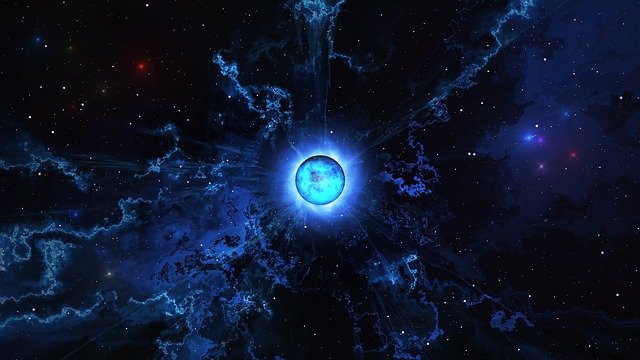
The solar system has many patterns in its structure. Over some of them, like the location of the planets, scientists have been puzzling over for hundreds of years. A new study by astronomers may explain why the eight planets we know are split evenly based on their type.
If we imagine the solar system as a stadium with running tracks, each planet will take its place in one of eight positions, and the sun will be located exactly in the center of the stadium.
Thanks to Einstein’s general theory of relativity, which in this case coincides with the geometry of our stadium, we know that the further the planets are located on the sky map generator from the Sun, the more time it will take for them to complete one complete revolution around the star.
Thus, Mercury is on the first track and orbits the Sun faster than the others – in just 88 Earth days. The eighth track will be occupied by the absolute outsider Neptune, who will “run” one lap around this imaginary stadium for 165 long Earth years. Even Uranus, which always finishes seventh, does it 80 years faster.
Understanding the speed of movement of planets around the Sun allows scientists to accurately calculate the periods of closest approach of the Earth to its neighbors, send reconnaissance probes to other planets, make gravity assist maneuvers on spacecraft, explore distant space using orbital telescopes, etc.
But one mystery of this stadium remains insoluble: the distance between the fourth and fifth lanes seems to divide the participants in our race into two groups exactly in half. In addition, the first four participants (Mercury, Venus, Earth, Mars) are smaller and have a different structure in contrast to their heavy rivals on lanes 5-8 (Jupiter, Saturn, Uranus, Neptune).
What have the scientists learned?
Ramon Brasser of Tokyo Institute of Technology and Stephen Moijsis of Colorado State University at Boulder wrote a paper on “Separation of the inner and outer solar systems by a structured protoplanetary disk.”
Brasser and Moijsis decided to find out who threw the last stone in this planetary curling and why the solar system is divided exactly in half depending on the type of planets. The authors of the study call this feature of the solar system “the great separation”, and first of all, they checked previous theories that could explain the paradoxically normalized arrangement of planets in cosmic chaos.
Many scientists believe that the cause of the great division is Jupiter – the biggest planet in our system, which is located just outside the asteroid belt. The fact is that such a large planet could act as a gravitational barrier and prevent the passage of gases and solid space objects closer to the Sun.
Astronomers used data from the ALME millimeter-wave telescope in Chile’s Atacama Desert and confirmed that a disk of dust gases similar to the “tiger’s eye” can often be seen around distant stars in young star systems.
Based on these data, scientists have suggested that a similar problem could have caused a great division in the solar system about 4.5 billion years ago.
According to the hypothesis of the authors of the study, the protoplanetary disk around the young Sun could create two zones with high and low pressure of gas and dust. These zones were responsible for the distribution of materials in the solar system and led to the emergence of the terrestrial group of planets and distant giants like Jupiter and Saturn.
Not Neptune alone
The theories described above may have to be revised, because several years ago astronomers from the United States and Russia announced that another planet could exist in the solar system. No, this is not Pluto, which the International Astronomical Union identified as a dwarf planet in 2006.
Scientists Michael Brown noticed that behind the orbit of Neptune, at the very edge of the solar system, there is an object that is about five times heavier than Earth. Astronomers have determined this by analyzing clusters of icy bodies in Below The Stars, which are subject to the gravitational effects of an invisible object, probably the Ninth Planet or the so-called Planet X.
This statement also confirmed the curvature of light from distant space objects, which may occur due to the impact of the Ninth Planet. Brown and Batygin confirmed that the hypothetical planet is about 400 astronomical units from the Sun. By comparison, the distance from the Earth to the Sun is only one AU. or about 150 million km.
Based on the location and group of objects that surround it, Planet Nine is a cold gas giant, the core of which is composed of metals and silicates, packed on top of solid ice. If the planet has an atmosphere, it should consist of hydrogen and helium, as well as particles of water and methane ice.
The main obstacle in detecting this planet is sunlight, which does not reach this distance and prevents modern telescopes from detecting reflections from distant objects. The authors of this hypothesis are confident that it is the gravitational field of Planet Nine that affects objects in the Kuiper belt, and the probability of this object being absent there is only 0.2%.
In his recent interview with the famous video blogger Yuri Dudyu, another author of the hypothesis about the Ninth Planet, Konstantin Batygin, said that to find it, they use the Subaru telescope of the National Observatory of Japan, which is located at the peak of Mount Mauna Kea in Hawaii and the rent of which costs about $ 20 thousand for one night.
Of course, the Ninth Planet can remain only a hypothetical object in the future, but if it is discovered, it can help astronomers learn more about the birth of the solar system and what influenced the arrangement of the planets around the sun.


